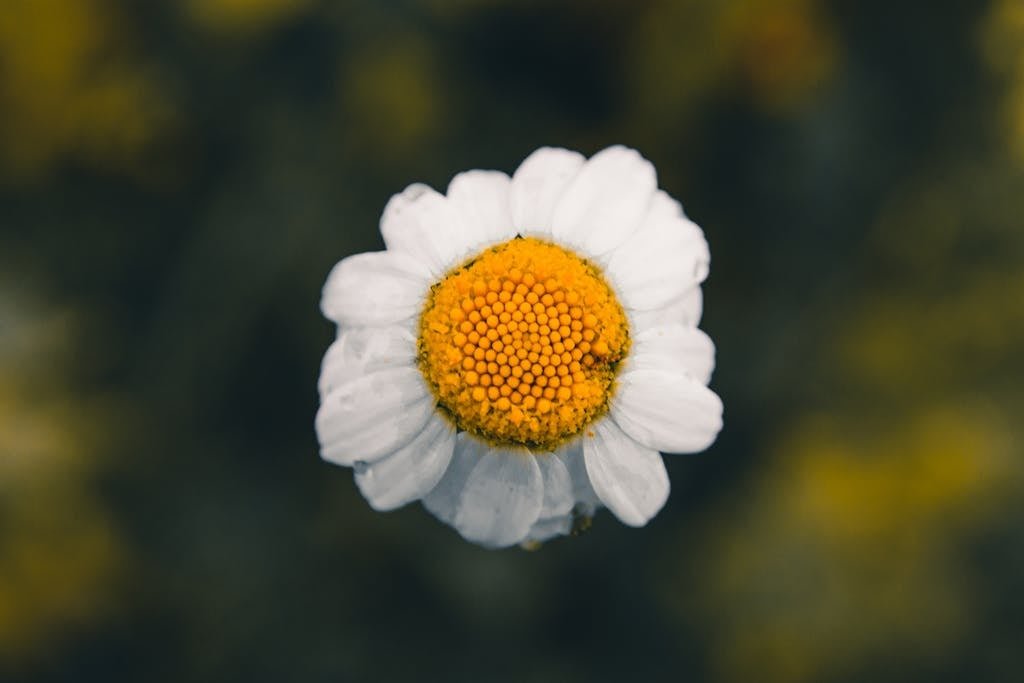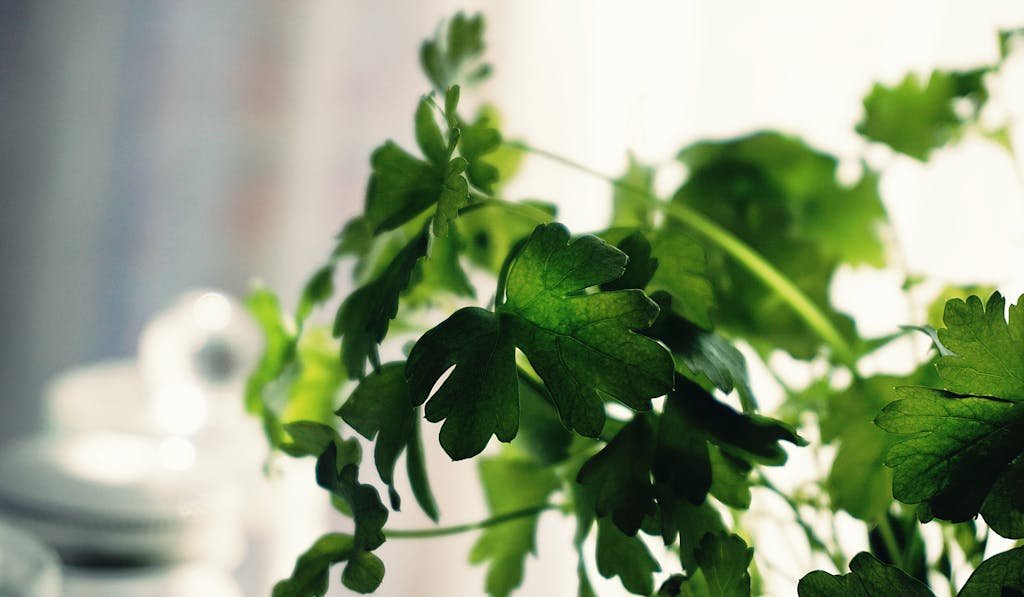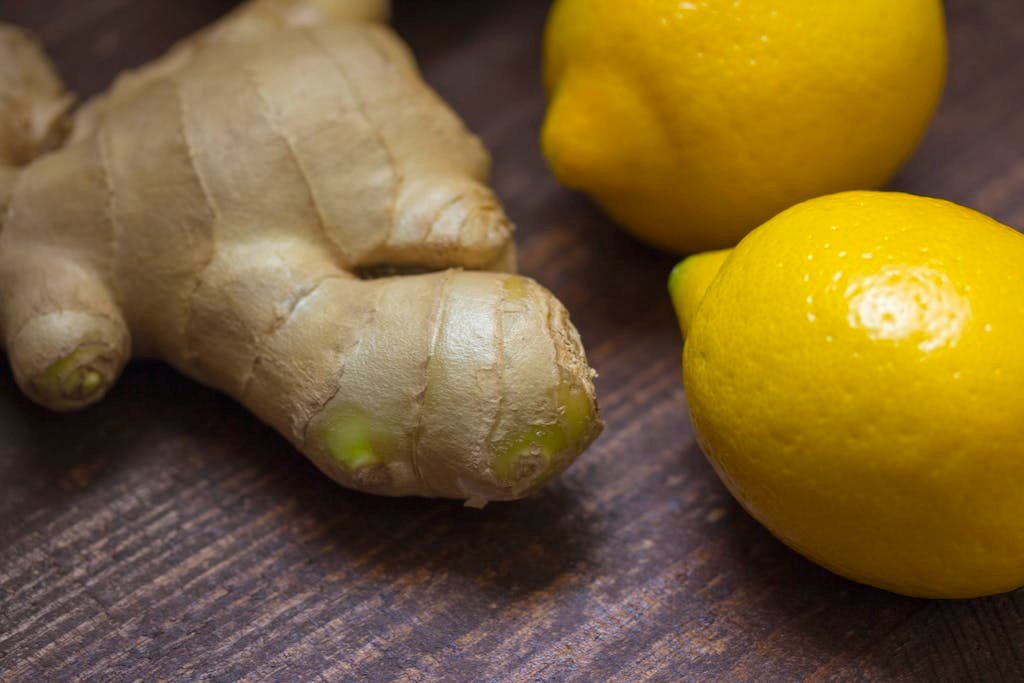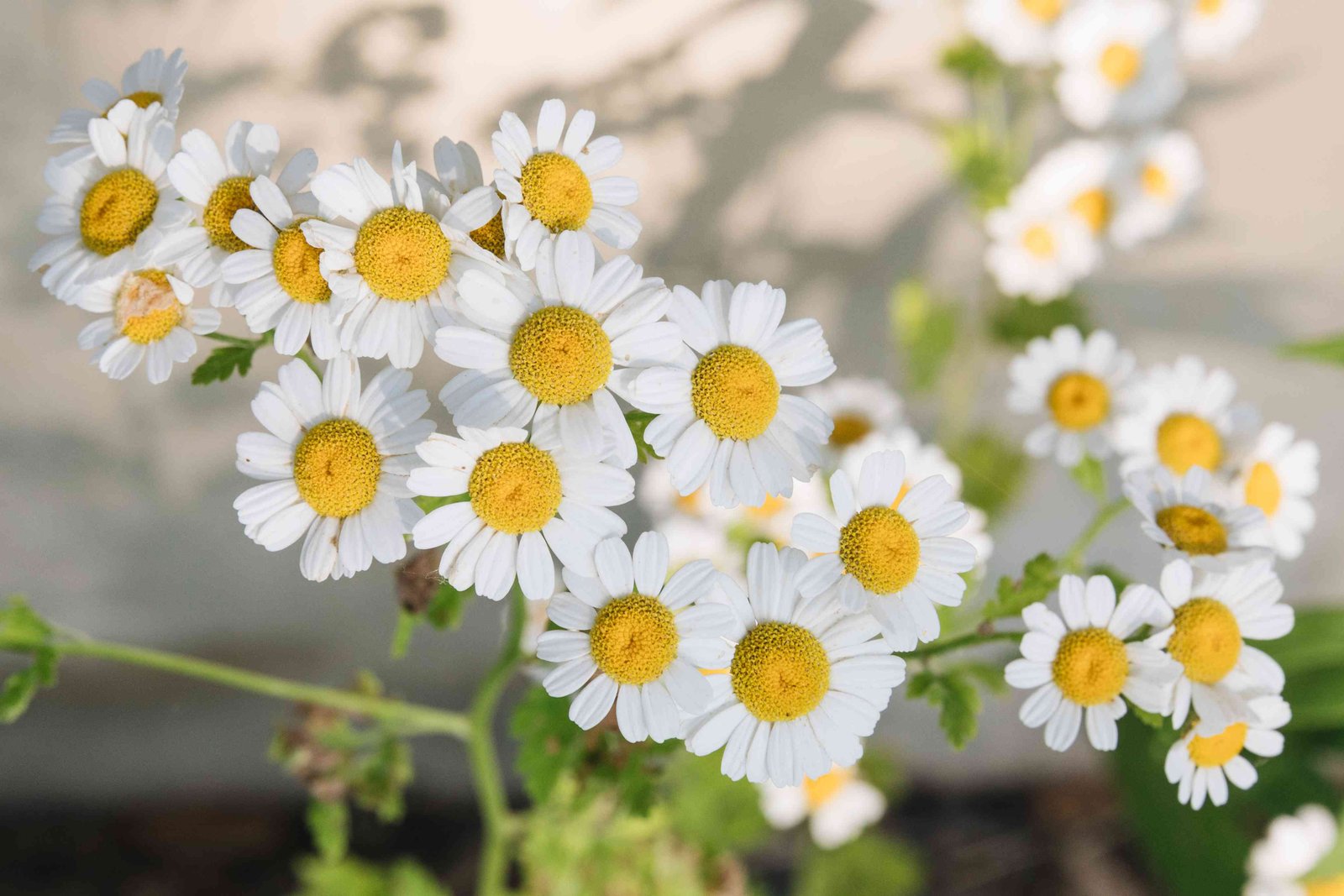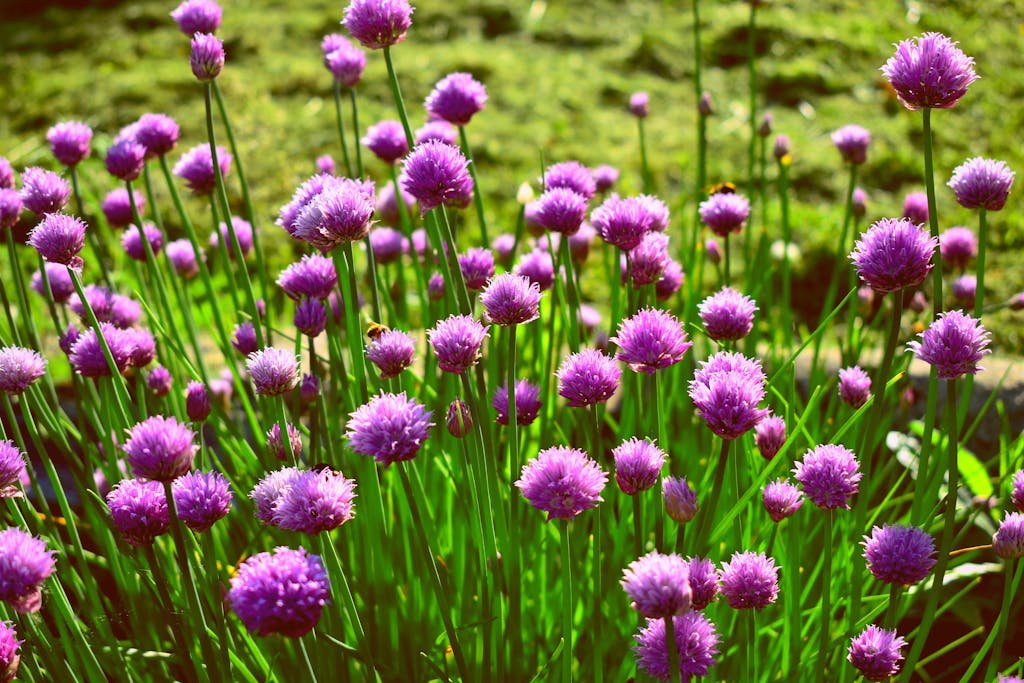Roman Chamomile (Chamaemelum nobile)
Roman Chamomile, scientifically known as Chamaemelum nobile, is more than just a pretty flower. It’s a powerhouse of benefits packed into delicate, daisy-like blooms. Originating from Europe and North Africa, this perennial herb has made its way into gardens and homes worldwide, beloved for its soothing aroma and multitude of uses.
Beyond its beauty, Roman Chamomile has a storied history of medicinal and cosmetic use. It’s renowned for its calming effects, making it a staple in teas, skincare products, and aromatherapy. Whether you’re a gardening enthusiast or simply curious about natural remedies, exploring the world of Roman Chamomile opens up a realm of possibilities.
Key Takeaways
- Roman Chamomile’s Versatile Benefits: Roman Chamomile, or Chamaemelum nobile, offers an array of health benefits including anxiety and stress relief, improved sleep, anti-inflammatory and pain relief properties, as well as skin health enhancement. Its natural sedative and antispasmodic properties make it a popular choice in natural healing practices.
- Ancient and Cultural Significance: With a rich history that dates back to ancient civilizations in Western Europe and North Africa, Roman Chamomile has been used for centuries for its medicinal benefits, soothing aroma, and in ceremonial practices, symbolizing peace and tranquility.
- Gardening with Roman Chamomile: Easy to grow and care for, Roman Chamomile is a drought-tolerant plant ideal for gardeners of any level. This herb not only beautifies garden spaces but also provides a readily available source of chamomile for teas, skincare, and aromatherapy uses.
- Aromatherapy Uses and Benefits: Roman Chamomile essential oil is highly valued in aromatherapy for its ability to decrease anxiety, improve sleep quality, reduce pain and inflammation, and support skin health when used properly through diffusion, topical application, or inhalation.
- Skincare Applications: Roman Chamomile is incorporated in a variety of skincare products due to its calming, anti-inflammatory, and antioxidant properties. It is effective in treating skin irritations like eczema, reducing redness and blemishes, and may contribute to anti-aging strategies.
- Safe and Effective Usage: While offering extensive benefits, it is crucial to conduct a patch test before topical application of Roman Chamomile products to avoid possible allergic reactions and consult with healthcare providers before use, especially for pregnant and breastfeeding women.
Benefits of Roman Chamomile
Roman Chamomile, scientifically known as Chamaemelum nobile, boasts a plethora of health benefits that make it a sought-after herb in both traditional and modern medicinal practices. Its gentle yet effective properties allow it to serve as a versatile solution for various issues, from skincare to digestive health.
Natural Remedy for Anxiety and Stress
Studies suggest that Roman Chamomile’s calming effect on the nervous system can significantly reduce symptoms of anxiety and stress. Its natural sedative properties help to relax the mind and improve sleep quality, making it a popular choice for those seeking natural alternatives to manage mental health.
- Promotes better sleep
- Reduces stress levels
Anti-inflammatory and Pain Relief
Roman Chamomile contains several chemical compounds that contribute to its anti-inflammatory and analgesic effects. These properties make it effective in easing discomfort associated with conditions like arthritis, sore muscles, and menstrual cramps.
- Eases arthritis pain
- Soothes menstrual cramps
Skin Health Enhancement
The antiseptic and anti-inflammatory properties of Roman Chamomile make it a valuable ingredient in skincare. It’s widely used in creams and lotions to soothe irritated skin, reduce redness, and promote a healthier complexion.
- Calms skin irritation
- Reduces redness and blemishes
Digestive Relief
Roman Chamomile has been traditionally used to improve digestive health. It’s known to help with indigestion, nausea, and gas due to its antispasmodic properties, offering a natural remedy to enhance gut health and comfort.
- Improves indigestion
- Alleviates nausea and gas
This remarkable herb’s benefits extend beyond its calming aroma, proving to be a powerful ally in natural healing and wellness practices. Its timeless appeal in herbal medicine underscores the importance of harnessing nature’s bounty for holistic health solutions.
The Origin of Roman Chamomile
Roman Chamomile, scientifically known as Chamaemelum nobile, boasts a rich tapestry of history that traces back to ancient civilizations. Its journey began in the sprawling regions of Western Europe and North Africa, where it thrived in the temperate climates of these areas. Over the centuries, Roman Chamomile has woven its way into the fabric of various cultures, symbolizing peace, purity, and healing.
Ancient Romans were pivotal in the herb’s cultivation, using it expansively for medicinal purposes, as well as a ground cover due to its robust and low-growing nature. This practice not only highlighted its practicality but also its aesthetic appeal, with its daisy-like flowers and feathery foliage. The Romans, renowned for their baths, also used Roman Chamomile in their bathing rituals, infusing the water with its soothing scent.
The name “Chamomile” itself is derived from the Greek words ‘chamos’, meaning ground, and ‘melos’, meaning apple, hinting at the apple-like fragrance of the herb when crushed underfoot. This nomenclature reflects both its physical growth habits and its distinguished aroma, further embedding itself into folklore and tradition.
In historical texts and herbal compendiums, Roman Chamomile has been documented for its therapeutic uses. It was a staple in monastic gardens during the Middle Ages, serving not just as a medicinal herb but also as a symbol of resilience and tranquility amidst the tumult of the times.
Today, Roman Chamomile’s legacy as a natural remedy and a symbol of calm continues to be endorsed by modern research. Studies recognize its pharmacological benefits, cementing its status as a valuable plant in both traditional and contemporary holistic practices. Its ability to soothe, heal, and restore has stood the test of time, transitioning seamlessly from ancient herb gardens to modern-day aromatherapy and skin care formulations.
Growing Roman Chamomile in Your Garden
Gardening enthusiasts often look for plants that are not only aesthetically pleasing but also offer a multitude of benefits. Roman Chamomile (Chamaemelum nobile) is a perfect addition to any garden for those who appreciate both beauty and functionality. Cultivating Roman Chamomile can be a fulfilling endeavor, as it thrives with minimal care, making it suitable for both seasoned gardeners and novices.
When to Plant:
Roman Chamomile seeds should be sown in late spring, after the last frost, when the soil has warmed up. This herb prefers locations that receive full sun to partial shade. It’s adaptable to a variety of soil types, but well-draining soil is crucial to prevent root rot.
Watering and Care:
Roman Chamomile is drought-tolerant once established, requiring minimal watering. Overwatering can lead to fungal diseases, so it’s essential to allow the soil to dry out between waterings. A light mulch can help retain soil moisture and suppress weeds. Fertilization is generally unnecessary, as Roman Chamomile grows well in moderately fertile soils.
Pest and Disease Management:
One of the advantages of growing Roman Chamomile is its resistance to most pests and diseases. However, gardeners should keep an eye out for aphids and mealybugs, which can be managed with neem oil or gentle insecticidal soap. Proper spacing between plants aids in air circulation, reducing the risk of fungal diseases.
Harvesting:
The best time to harvest Roman Chamomile flowers is in the morning after the dew has evaporated but before the sun is at its peak. This ensures the highest concentration of essential oils, maximising the plant’s aromatic and medicinal properties. Regular harvesting encourages continuous blooming.
Integrating Roman Chamomile into your garden not only beautifies the landscape but also provides a ready source of this versatile herb. Whether used in teas, skincare products, or for its soothing aroma, Roman Chamomile’s ease of care and multitude of benefits make it a valuable addition to any garden.
Using Roman Chamomile in Aromatherapy
Roman Chamomile Chamaemelum nobile thrives not only in gardens but also in the realm of aromatherapy, where it’s a prized component for its soothing scent and therapeutic properties. In aromatherapy, Roman Chamomile oil is extracted from the flower heads of the plant and is widely utilized for its calming effects. Studies have shown that the aroma of Roman Chamomile can significantly decrease anxiety and improve quality of sleep, making it a favorite among those seeking natural remedies for stress and insomnia.
The oil’s application in aromatherapy doesn’t stop at stress relief. Here are some notable benefits:
- Sleep Enhancement: Diffusing Roman Chamomile oil in the bedroom at night can create a peaceful environment conducive to sleep.
- Stress Reduction: Inhalation of its scent has been linked to lower levels of stress hormones in the body.
- Pain and Inflammation Relief: When used in massages, it may help in relieving muscle pain and reducing inflammation.
- Skin Health: Its antimicrobial properties make it a beneficial oil for skin treatments when diluted with a carrier oil.
When incorporating Roman Chamomile into aromatherapy practices, it’s important to use it correctly:
- Diffusion: Add a few drops of Roman Chamomile essential oil to a diffuser filled with water. This method is perfect for promoting relaxation throughout the home.
- Topical Application: Mix with a carrier oil like coconut or almond oil before applying to the skin. This can be used for massages or skin application.
- Inhalation: For a quick stress relief, inhaling the scent directly from the bottle or a cotton ball with a few drops of the oil can be effective.
Despite its wide range of benefits, it’s crucial to conduct a patch test before topical application to avoid any potential allergic reactions. Moreover, pregnant and breastfeeding women should consult with a healthcare provider before using Roman Chamomile oil.
Roman Chamomile in Skincare Products
Roman Chamomile, with its gentle and soothing properties, has carved out a significant niche in the realm of skincare. Renowned for its ability to calm irritated skin, reduce inflammation, and offer an array of antioxidant benefits, this botanical ingredient is a staple in numerous skincare formulations.
The effectiveness of Roman Chamomile in skincare stems from its rich composition, including bisabolol, apigenin, and azulene. Bisabolol is celebrated for its skin-healing properties, apigenin is known to combat redness, and azulene offers a powerful soothing effect, making Roman Chamomile an excellent choice for those with sensitive or problematic skin.
Skincare products harnessing the power of Roman Chamomile range from face creams, serums, masks, to oils, each designed to deliver specific benefits:
- Face Creams and Serums: Target dryness and irritation, promoting a balanced and hydrated complexion.
- Masks: Provide deep soothing and revitalizing effects, leaving the skin soft and supple.
- Oils: Offer concentrated healing properties, perfect for spot treatment or as a calming agent in aromatherapy blends.
Research underscores the importance of Roman Chamomile in skincare. A study in the journal Phytotherapy Research highlighted its potential in treating eczema, reinforcing its status as a valuable component in natural skincare remedies. Furthermore, its anti-inflammatory and antioxidant properties suggest it can play a role in anti-aging strategies by fighting free radicals and mitigating the effects of oxidative stress on the skin.
Incorporating Roman Chamomile into skincare routines is simple yet effective. Whether through direct application of products containing Roman Chamomile or DIY recipes that blend its oil with other natural ingredients, the herb’s broad-spectrum benefits make it a versatile and indispensable ally in achieving healthy, radiant skin. However, it’s always wise to conduct a patch test before introducing new elements into your skincare regimen, ensuring compatibility and preventing adverse reactions.
Roman Chamomile’s versatility and efficacy in skincare make it a standout ingredient for those seeking natural remedies for their skin concerns. Its soothing properties, backed by science, offer a promising solution for a range of issues from inflammation to eczema, making it a must-have in beauty routines.
Whether you’re reaching for a tea to calm your nerves or a serum to soothe your skin, Roman Chamomile’s benefits are clear. Remember, it’s always wise to do a patch test when trying new skincare products. Embracing Roman Chamomile could be the step toward healthier, more radiant skin.

